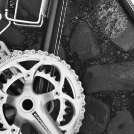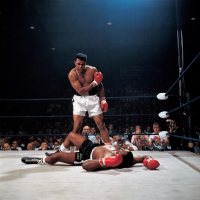CeramicSpeed in the dock
mariamartinez
Posts: 94
Hi I saw the post on ceramic bearings on road.cc and also this video (https://www.youtube.com/watch?v=vPWgtscgfa0) both of which seem to suggest ceramics bearings don't work as well as claimed? Anyone got any direct experience of this? Is it mainly hype? I see ceramicspeed have just launched a new product too with a lot of claims.
(http://www.bikeradar.com/road/news/arti ... eys-49782/)
thanks Maria
(http://www.bikeradar.com/road/news/arti ... eys-49782/)
thanks Maria
0
Comments
-
Old news really
http://road.cc/content/forum/134304-cer ... d-bearings (data at link has changed)
Ceramics give a gain? yes
Ceramics give a big gain? No
Ceramics have downsides as well as upsides? yes
At the end of the day you pays your money and makes your choice, would I use them? No the cost is just too high for the somehwhat marginal gain, if I were running a pro cycle team would I use them? Yes probably, even 2 (or even about 10 if you do every bearing) is worth having then.Currently riding a Whyte T130C, X0 drivetrain, Magura Trail brakes converted to mixed wheel size (homebuilt wheels) with 140mm Fox 34 Rhythm and RP23 suspension. 12.2Kg.0 -
Pretty sure I read somewhere that Royce prefer to use steel on basis of better manufacturing tolerances - ceramics are not inherently the best bearings. Would go so far as to say that you'd be silly not to try ceramics if you've invested in an aero TT rig and done testing, but I can't see much point if you aren't chasing fractions of a second.0
-
hi I suspect for the pro team they get them for free in a sponsorship deal dont you think?0
-
design, quality etc. count too, not only material
if you run ceramics with light oil you could save energy vs. grease, you could do that with steel too, bearing life would vary
but the video is just some stranger on the internet making claims based upon what he claims to be data from other sources, verifying the source data and context to determine if what he claims is actually relevant and true would take a lot of effort
it's youtube, he's got a channel, seems likely he's earning money from views and needs to generate clickbaitmy bike - faster than god's and twice as shiny0 -
The principle is sound enough. Extremely hard, low surface friction ceramics are well known, the obvious being titanium nitride. My personal view is that the hybrid bearings, where the balls are ceramic and the races metal, might actually be worse in terms of wear than a normal construction, since the bearing races would wear faster than if they run against a softer bearing. It would depend on the bearing tolerances. I don't see any reason other than cost why a sintered ceramic bearing would be any rounder than a metallic one. So if you are paying as much for your bb as for a half decent wheelset, what you are actually paying for is a high level of quality control.
As for the power savings.... twice of bugger all is bugger all twice.0 -
No product works as well as claimed. They'll ignore the studies that show as negative or neutral and rave about any good studies. If you're after every last watt then go for it but for non competitors- save your cash.0
-
I tested a load of bearings and the difference is small. The seal has a much greater effect on the drag followed by the grease. There is a big difference if you buy ebay cheap bearings though and that is more to do with the manufacturing tolerances.
The rolling element material doesn't affect it much.
Graphs below:
What is more interesting is after a few 100km, the steel bearings are far more efficient. 0
0 -
So.
In summary, NTN Non-Contact are the way to go.The above may be fact, or fiction, I may be serious, I may be jesting.
I am not sure. You have no chance.Veronese68 wrote:PB is the most sensible person on here.0 -
PBlakeney wrote:So.
In summary, NTN Non-Contact are the way to go.
Yes unless you need the sealing. Then FAG are better - it's the OE fit on Hope stuff.0 -
I suspect that the ceramic bearing proponents would argue that the materials they use in turn facilitate the use of lower friction lubricants, which would shorten the lifespan of a metal bearing.
The changes over time are very interesting though. Presumably this infers that ceramics are so hard that they can't really be "run in" like a metal-to-metal bearing interface?0 -
First Aspect wrote:I suspect that the ceramic bearing proponents would argue that the materials they use in turn facilitate the use of lower friction lubricants, which would shorten the lifespan of a metal bearing.
The changes over time are very interesting though. Presumably this infers that ceramics are so hard that they can't really be "run in" like a metal-to-metal bearing interface?
Yes that's correct. Ceramic bearings are usually hybrid so they have metal races, the large difference in hardness causes the races to shred rather than bed. This is shown in the graph.
The technical term for it is Hertzian contact stress. This wikipedia article is quite heavy on the maths but there is an animation of a sphere being pushed into a yellow solid, a ceramic bearing behaves in this way
https://en.wikipedia.org/wiki/Contact_mechanics0 -
Friction facts did a fairly in-depth assessment of bottom brackets. The top performing were mainly ceramic but their conclusion was that this due to the higher quality of the expensive models, they had been engineered to perform (minimal seals, minimal and thin grease, very uniform bearings, etc). One of the top ones was steel but it was very well engineered.
For what it's worth I run a cbear ceramic bottom bracket that is much, much better than the rotor one I had fitted before.0 -
It's interesting that CeramicSpeed's own video on how to maintain their jockey wheels says just light oil for road, grease for MTB.
Adding grease to their bearings makes them spin just like any other (i.e. not fast).
Problem is, if you need grease in MTB jockey wheels, then you'll likely need it in road too, as UK winter roads hose the derailleur with gritty, salty, dirty water on a permanent basis. And if you don't then your £500 CS bearings are going to be toast in a matter of months. (or weeks)!
Same goes for BB, and as for headset, well if you're using ceramic bearings there, then you need your head examined!!0 -
I can't believe we are talking about the rotation speed of jockey wheels bearings...
It is so unimportant that jockey wheels without bearings are just as fastleft the forum March 20230 -
ugo.santalucia wrote:I can't believe we are talking about the rotation speed of jockey wheels bearings...
It is so unimportant that jockey wheels without bearings are just as fast
Following on from your comments on another thread about pointless purchases and rampant consumerism, ceramic jockey wheel bearings would seem to fall into that category. That people in some cases actually pay hundreds of pounds for this very dubious gimmickry is astounding. Of all the things on a bike you could throw money at to improve your speed this has to be the least productive on any cost/benefit analysis. It would be like expecting to improve your marathon distance personal best by paying someone 500 quid to cut your little toenail.0 -
Shortfall wrote:It would be like expecting to improve your marathon distance personal best by paying someone 500 quid to cut your little toenail.
... or buying a more aero nipple lubeleft the forum March 20230 -
I've just seen the somewhat angry response by Ceramicspeed back at Fast fitness tips. I gather Ceramicspeed took offence at some of the stuff presented.0
-
I honestly am amazed by a company justifying $500 on Jockey wheels because they will save 2.4 watts. That's the equivalent of me coasting whilst I get my water bottle out a few times on a ride. It's such a small amount to even be quantifiable.0
-
If it was true though - I mean another $2000 dollars on a bike which gave you 10 watts - I reckon that'd be value - as you say though is it quantifible.[Castle Donington Ladies FC - going up in '22]0






